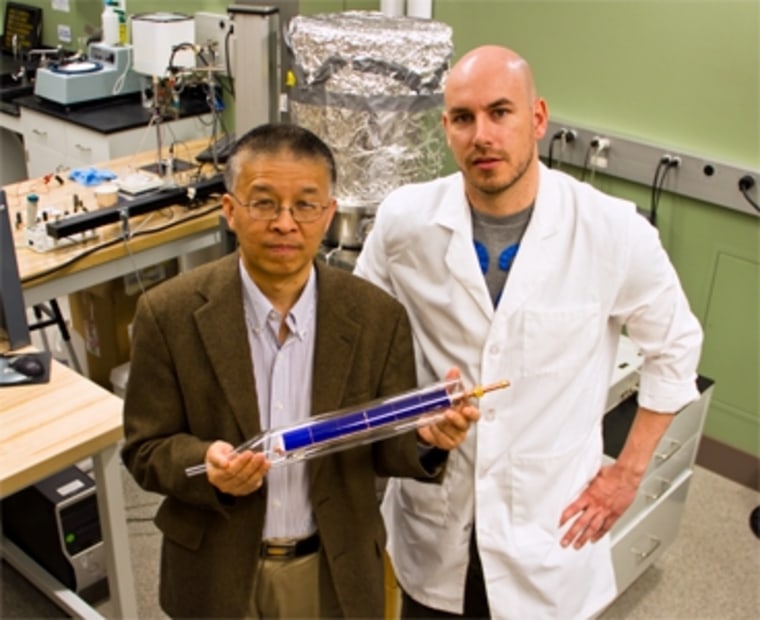With the aid of nanotech materials, scientists have engineered a new way to convert the sun's heat into electricity that is roughly eight times more efficient than previously reported solar thermoelectric devices.
What's more, the device could be added to existing solar water heaters, giving people a jolt of electricity to power their gadgets along with warm bath water, noted Gang Chen, an engineer at the Massachusetts Institute of Technology.
"We just changed the existing system a little bit," he told me today. "Then we generate electricity and supply hot water."
Chen and colleagues at MIT and Boston College described the technology in a paper published online May 1 in Nature Materials.
Thermoelectric devices
Solar thermoelectric devices typically involve vast arrays of movable mirrors that track the sun and focus its rays on a small area. In solar thermal power plants, another type of solar energy, the sunlight is focused on tubes that heat fluid inside that is then used to boil water in a conventional steam-turbine generator.
The new system takes advantage of a thermoelectric principle "where when there is a temperature difference across a solid it actually generates a voltage," Chen explained.
He and his colleagues placed a flat heat absorber — a piece of copper coated with a nanostructured material — into in a vacuum so that the "absorbed radiation doesn't have any place to go," Chen said. This forces the absorbed heat to flow along two legs with thermoelectric properties.
The combo generates and harnesses a temperature difference of about 200 degrees Celsius between the interior of the device and the ambient air. That temperature difference is what drives the electricity along the legs, Chen explained.
Solar hot water integration
The device is well suited for integration with solar hot water systems, allowing a quicker payback for the cost of installation, according to the research team.
Solar hot water systems today already consist of a black absorber to heat up water flowing through a copper pipe.
"Now, what we do instead of directly attaching [the absorber] to a copper pipe, we put on those two legs to take out part of the energy as electricity," Chen said. "The rest goes to hot water, so you now have two-in-one."
In such a setup, the ambient side of the system is actually the hot water, which at about 60 degrees C is warm enough for a shower. "We can use the additional 140 degrees to get the electricity out," Chen noted.
Current photovoltaic efficiency is greater than that achieved with this system, so it is not going to replace rooftop solar panels, Chen noted. But adding to existing solar hot water systems make sense.
"The additional incremental cost of electricity is really cheap," he said. "In fact, according to our modeling it is cheaper than photovoltaics."
More stories on solar energy technologies:
- GE to build nation's largest solar power plant
- How serious is space solar power
- Chicago getting a tower of power – solar power
- Solar power coming to a store near you
- Origami boosts solar panel productivity
John Roach is a contributing writer for msnbc.com. Connect with the Cosmic Log community by hitting the "like" button on the Cosmic Log Facebook page or following msnbc.com's science editor, Alan Boyle, on Twitter (@b0yle).
